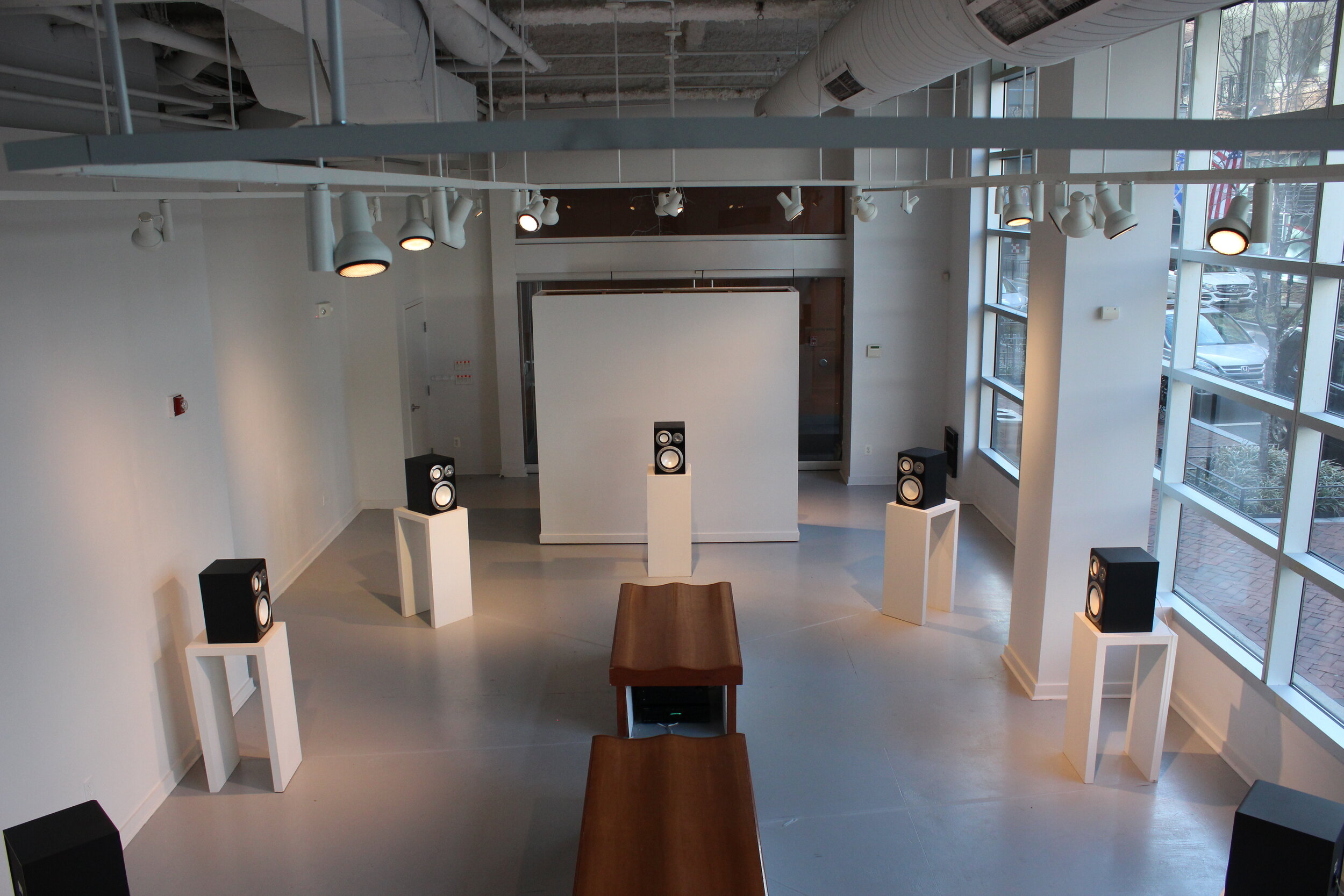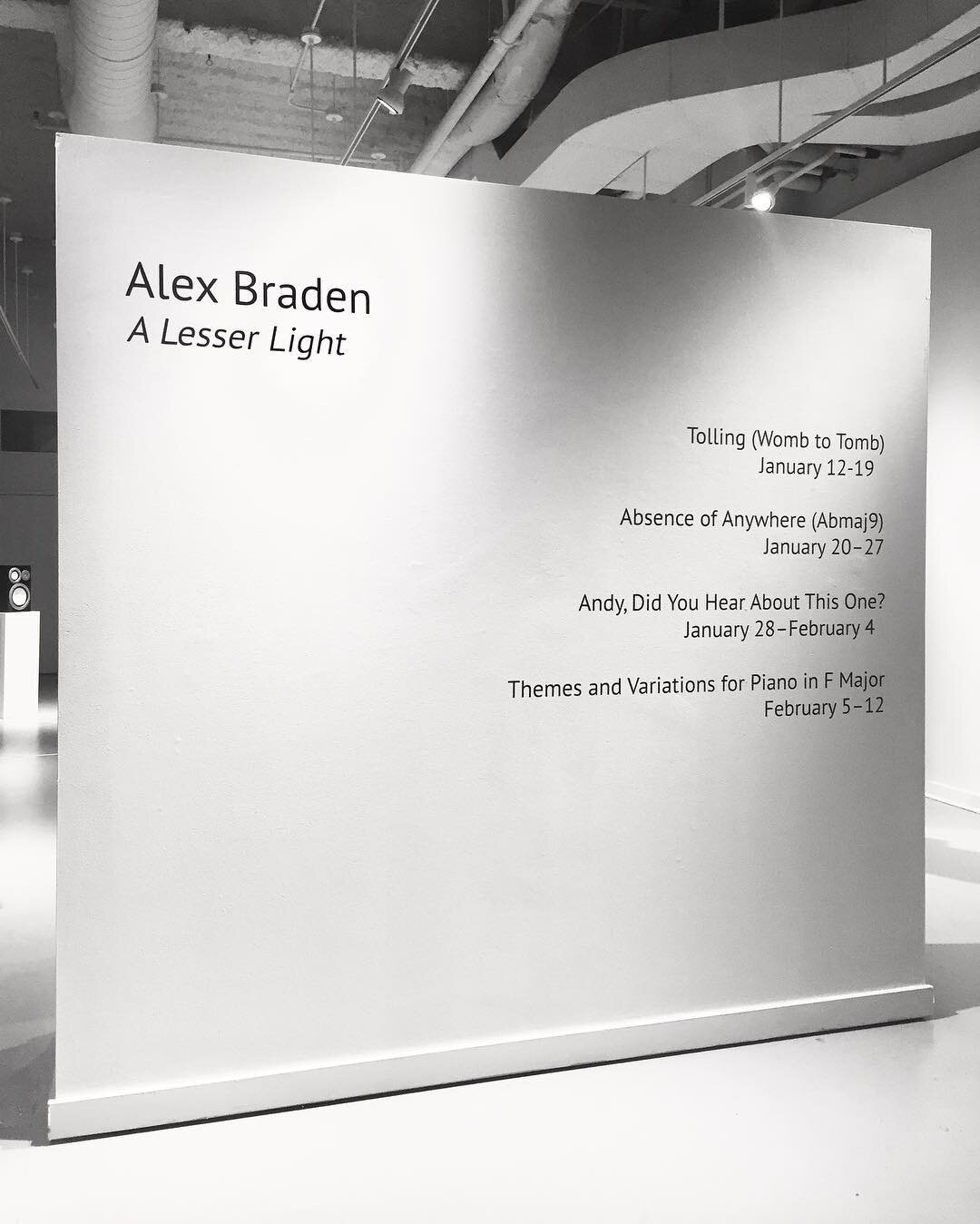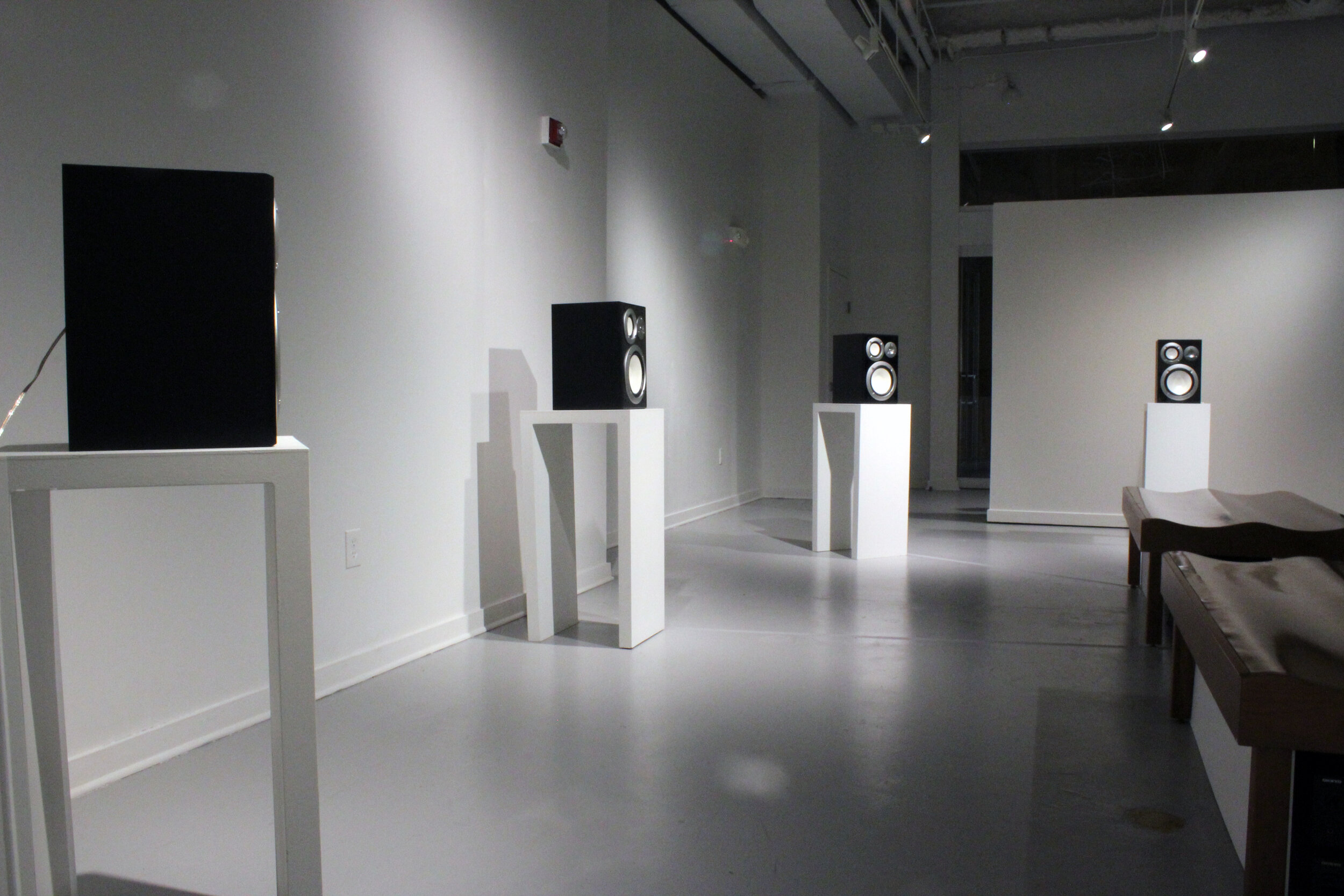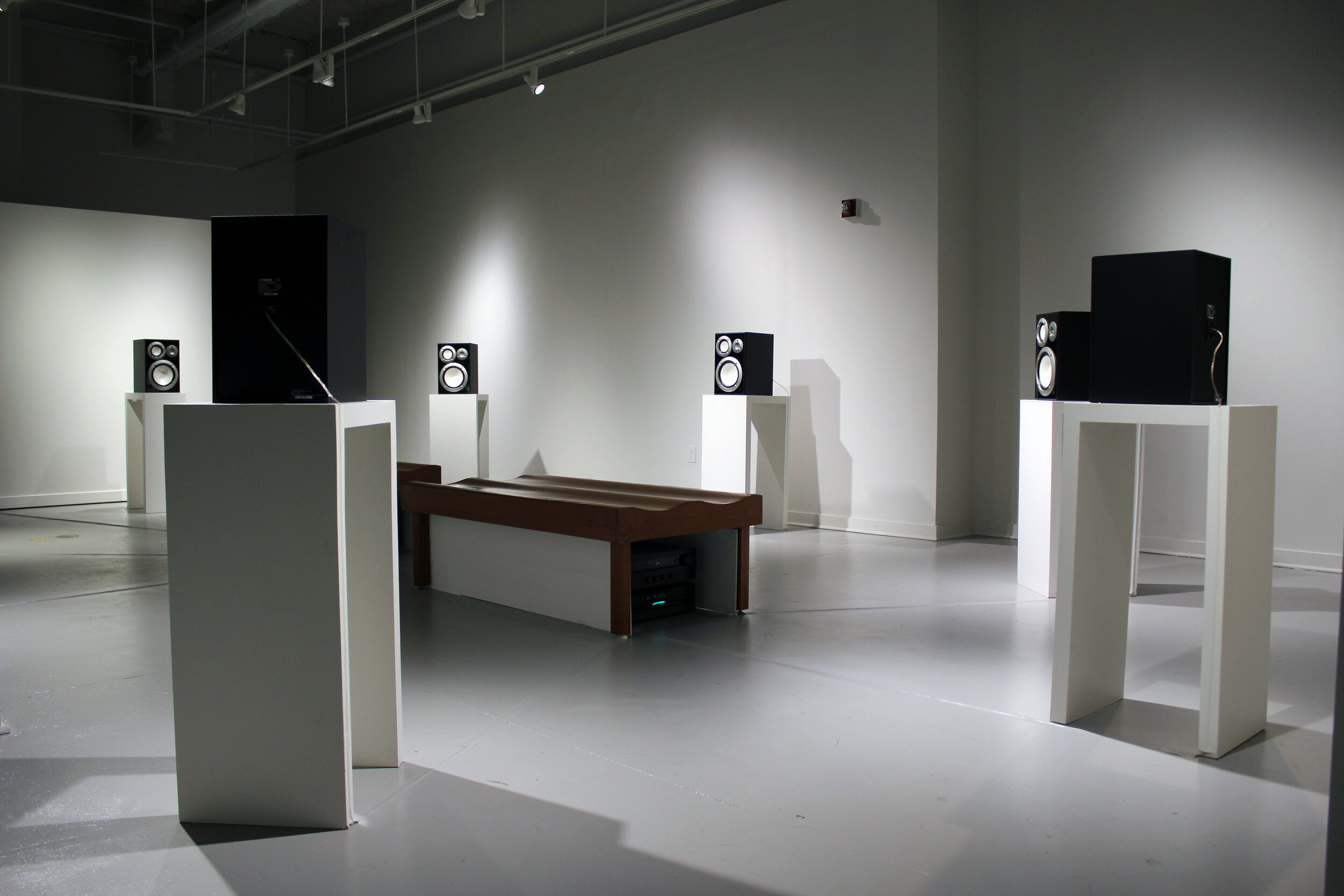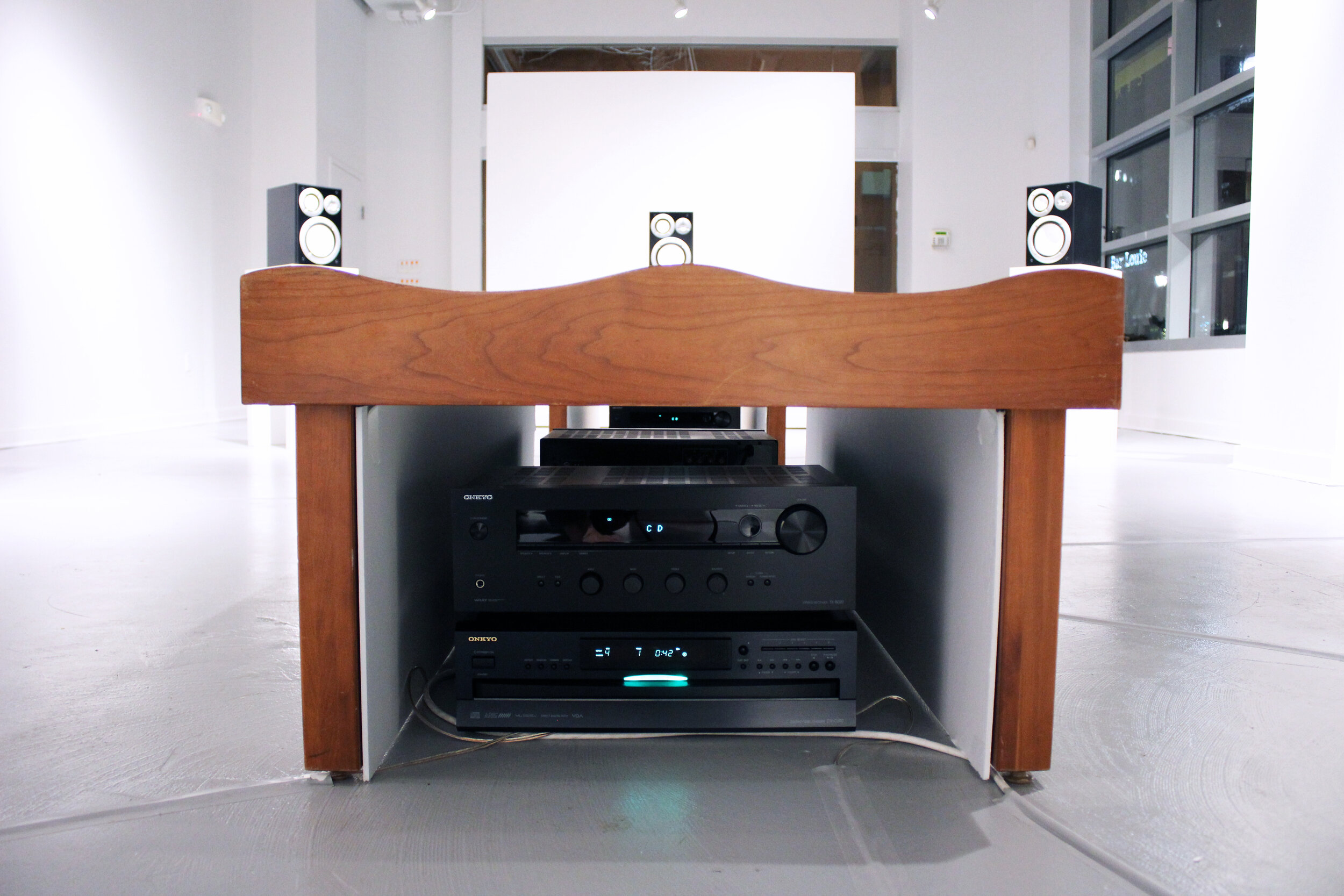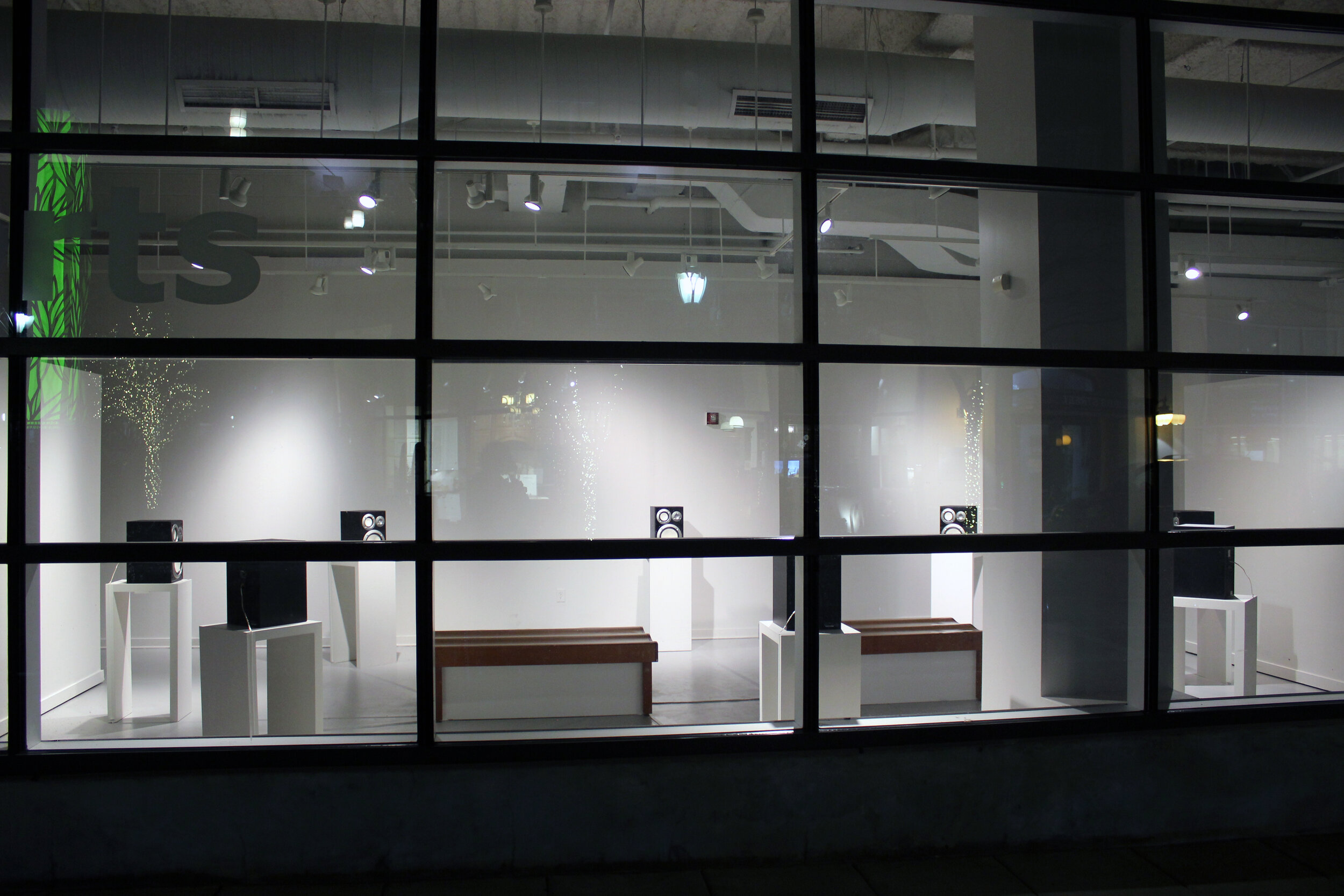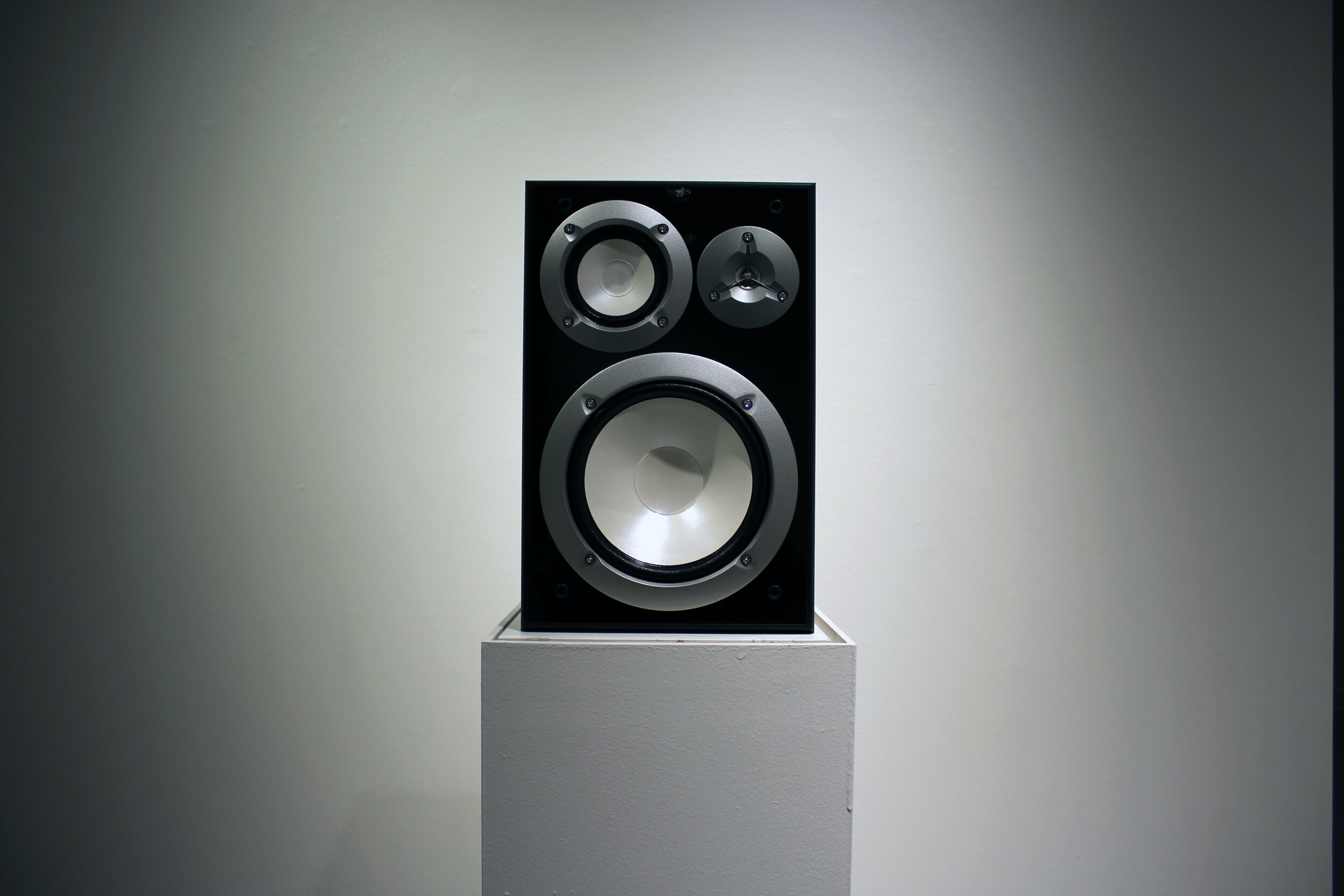A Lesser Light
I_Themes and Variations for Piano in F Major
II_Tolling (Womb to Tomb)
III_Absence of Anywhere (in Ab Major)
IV_Andy, Did You Hear About This One?
8.1 Surround sound, Compact discs, players.
2018
A LESSER LIGHT was a month-long installation programmed into four distinct movements, occupying one week each.
Every movement used the same framework throughout: each of the eight speakers could play one melodic short at a time via dedicated CD changer cueing snippets randomly from the movement's library. Thus every movement—given one full week of nonstop play— resulted in a series of unrepeated chance arrangements and infinite eight-part harmonies.
Themes and Variations for Piano in F Major
_explodes the classical piano sonata form. T&V's hundreds of original piano mini-compositions could in sequence comprise a traditional linear piece; but via A LESSER LIGHT they become an unpredictable and infinitely harmonious octet.
TOLLING (WOMB TO TOMB)
_is an experimental piece of music mathematically informed by per-minute worldwide human birth and death rates. Comprising four speakers dedicated to birth (struck bell) and four to death (reversed bell)—with BPMs quartered to sum the data—the eight speakers embody a worldwide human lifecycle metronome. Fluctuating in pitch but tuned to the same musical key, the movement evolves harmonically ad infinitum.
Absence of Anywhere (in Ab Major)
_was inspired by a friend who mixes pre-recorded animal and ambient sound effects into travel features for a major production company. Raw footage of the natural world is unbelievable to the average TV viewer. I ripped hours of sounds from these online productions and tuned them to the key of Ab Major. The result: a wayfaring cacophony making no geographical sense while still intrinsically musical.
ANDY, DID YOU HEAR ABOUT THIS ONE?
_wishes it was the comments section of a livestream. Inspired by forgotten century predictions and Ian Svenonius, this movement is particularly interested in phenomena.
"...We look at Athens and we think, 'Oh, they were so creative and wonderful.' And then you look at the Spartans, and they have very little to show in terms of achievements. But who knows? Maybe they had some incredibly rich oral histories or perhaps they had computers. And they were storing everything on computers, and Athenians were primitive and just made sculptures and stuff, so now we think the Athenians are the geniuses." —Ian Svenonius, 2017
"Google Vice President Vint Cerf warned of a 'forgotten generation, or even a forgotten century' what awaits us when 'bit rot' takes hold and our digital material gets lapped by the new hardware and software racing around it." —Adam Chandler, The Atlantic, 2015
